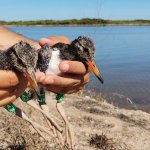Recently while monitoring shorebirds at the Delta del Estero Real WHSRN site, we observed 12 pairs of Black-necked Stilts (Himantopus mexicanus) nesting in a pond that was not in use on a Puerto Morazán community shrimp farm. However, probably because of a lack of adequate knowledge, this pond was later filled and the nests were flooded. A small behavior change could have prevented this loss. The difference between protection and destruction often depends on knowledge. Increasing knowledge is one way that we can have community investment in conservation. People are more likely to value and protect something that you understand.
In places where a change, that may seem small to some, can have such a significant effect on the birds, it is of vital importance that the community is actively involved in protecting the birds. This includes the productive sector making a commitment to the protection of the birds, even if their primary objective is profit. Environmental education is one tool that can be used to increase the knowledge of the community and encourage corporate engagement in conservation.
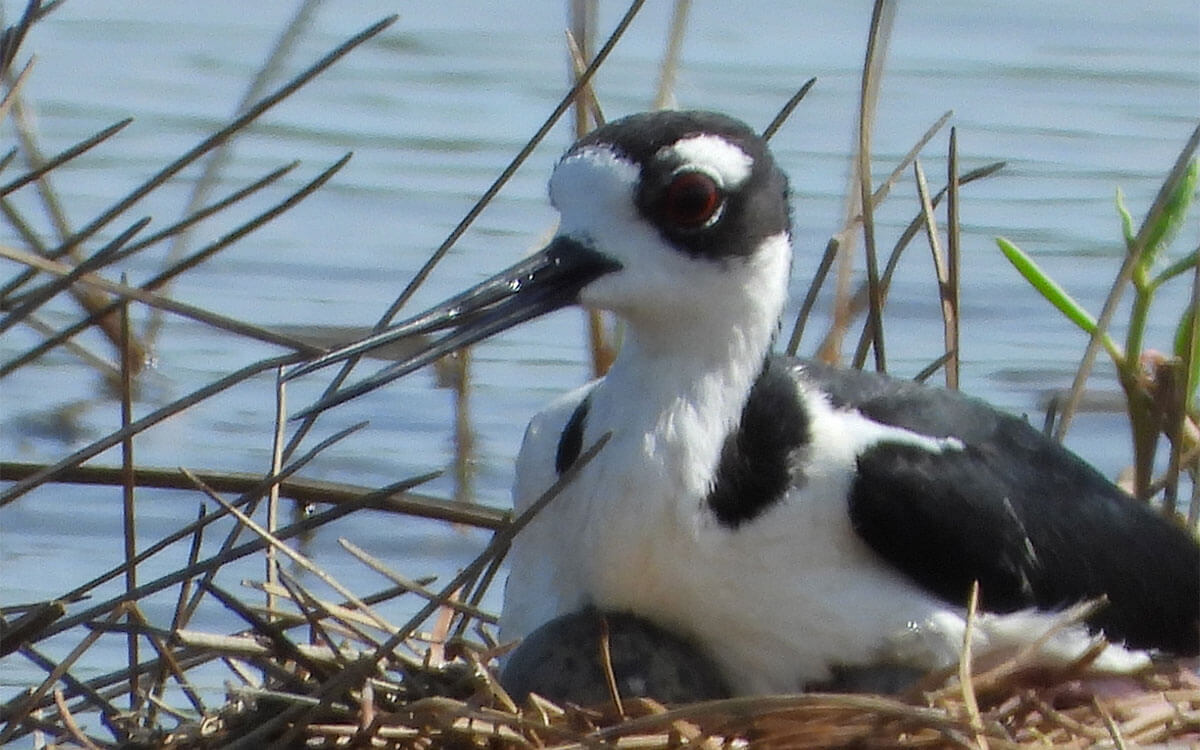
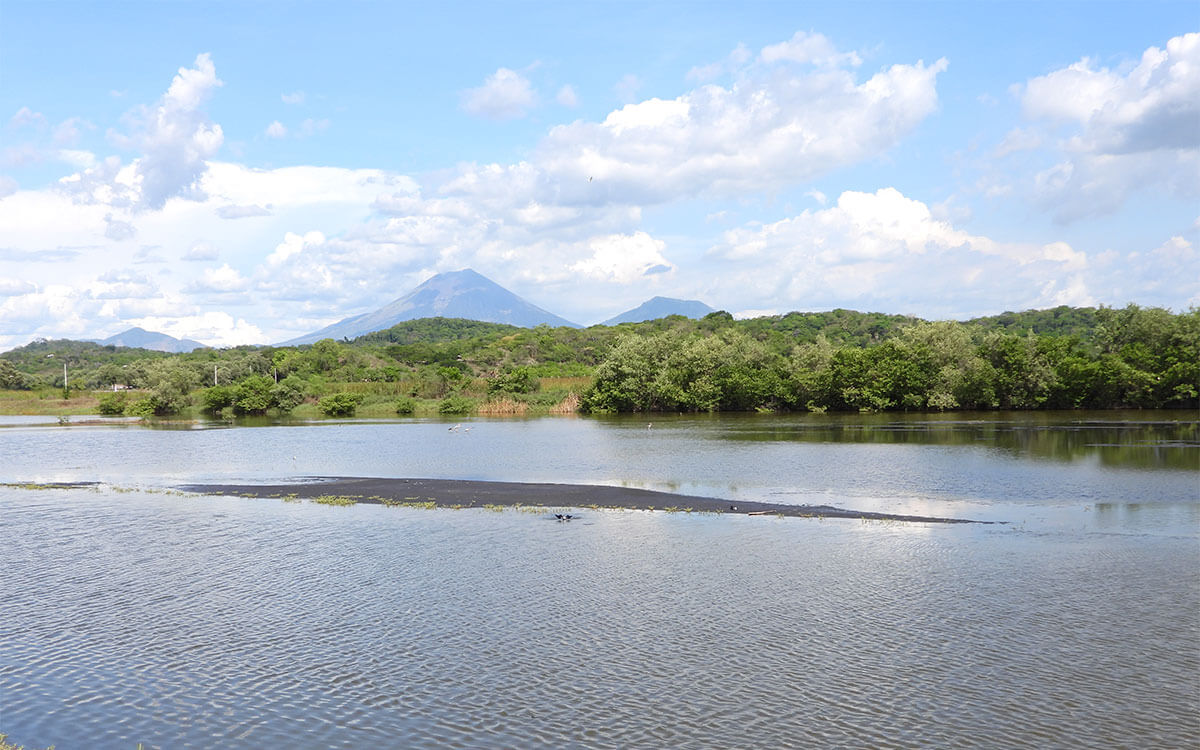
Left: Black-necked Stilt nesting at Shrimp farm in Puerto Morazán community shrimp farm. Right: Puerto Morazán community shrimp farm. Photos: Salvadora Morales.
The internationally important Delta del Estero Real WHSRN site, is located in the Delta del Estero Real Nature Reserve within the Gulf of Fonseca. Within its boundaries is approximately 20,000 hectares of shrimp farms, including one of the largest shrimp farms in Nicaragua, the Camarones de Nicaragua Company (CAMANICA) belonging to the Nueva Pescanova group. For more than seven years CAMANICA has run the CAMAINICA Environmental Education Program, part of its corporate social responsibility program. In addition, they also offer a training program aimed at small to medium-sized cooperatives in the aquaculture sector, that provides information on the latest trends in biodiversity, biosecurity and traceability. These two CAMANICA programs offer opportunities to promote the message of shorebird conservation on the farms, encouraging the implementation of good practices for shorebird conservation.
In its environmental education program for June and July, CAMANICA invited the WHSRN Executive Office to present the Delta del Estero Real and its importance for shorebirds. Since its designation as a WHSRN site in 2016, it is the first time that a company has included shorebirds and involved local conservationist in the education program. The principal objective of the presentations was to generate awareness of the importance of the reserve for shorebirds and the role that shrimp farms play in the conservation of shorebirds.
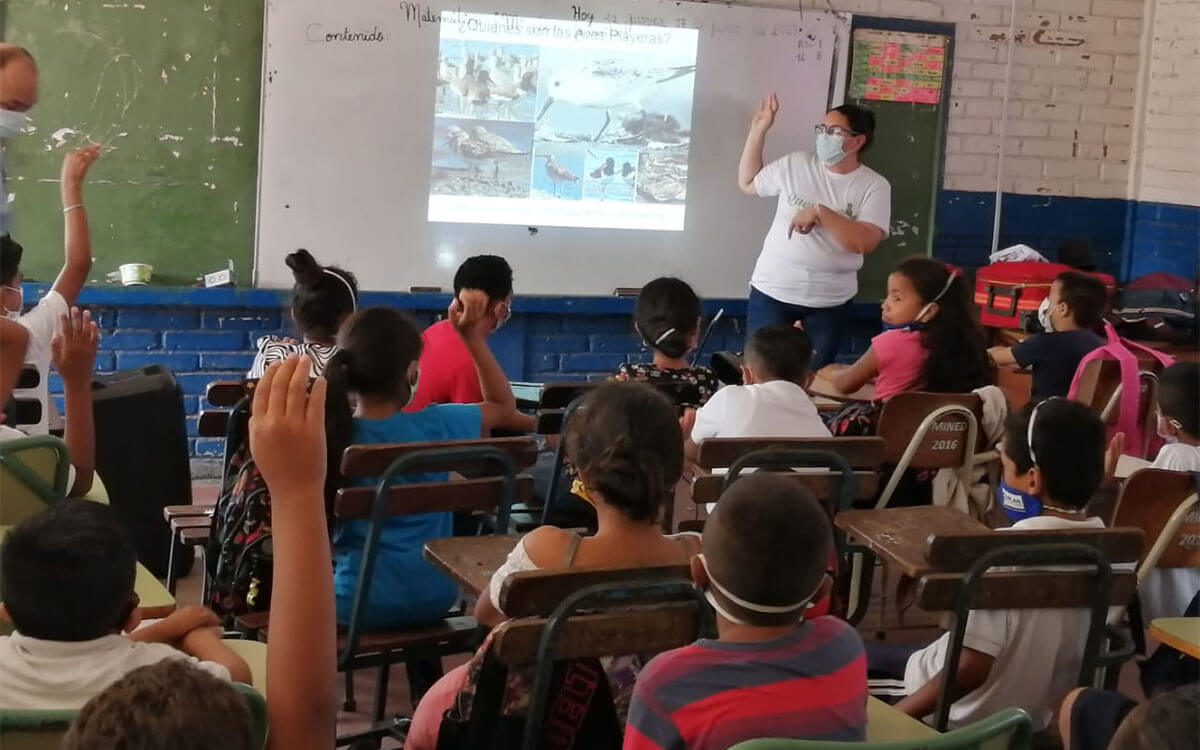
Erika Reyes from Quetzalli Group presenting to school children at the WHSRN site Delta del Estero Real in Nicaragua.
A total of 161 children from the Palacio and Puerto Morazán schools participated in the presentations. Students from the final year of secondary school showed a lot of interest in the subject. Children from fourth and fifth grade of the primary school also participated. To take home with them, children received posters, stickers, bracelets, and key messages from the Global Shorebird Day, as well as the unforgettable wings of the initiative #TodosSomosAvesPlayeras.
Two presentations were conducted by the WHSRN Executive Office and local partners, Erika Reyes from Grupo Quetzalli. Erika commented that “these types of presentations help to raise awareness about the importance of the Delta del Estero Real for migrating shorebirds. Additionally, it is easier to reach children than to change the minds of adults.” Carlos Pereira, Director of the Environmental Program of CAMANICA, stated that they had been giving presentations about the RAMSAR site and its management plan to students for several years, and that this year they considered it very important to include the issue of the WHSRN site.
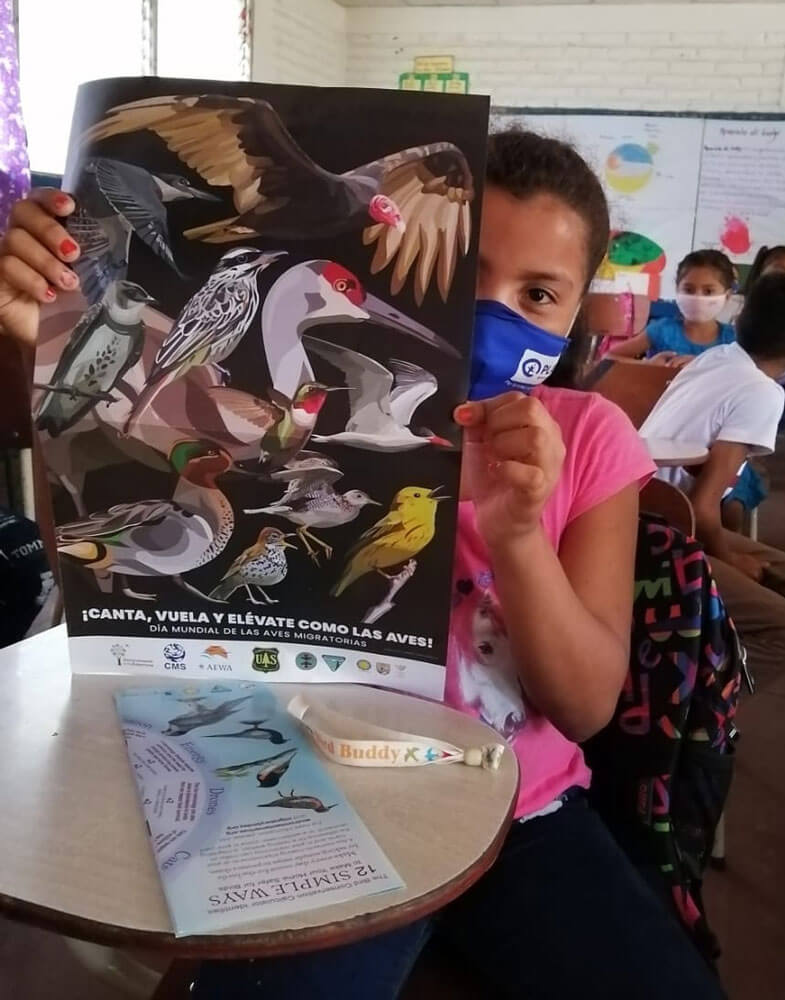
The children received posters, stickers, bracelets and key messages from the World Migratory Bird Day.
This is a first step towards community engagement with the companies in the areas close to the shrimp production sites. Both the producers and the community have contact with shorebirds during the different stages of their life cycle — during migration, reproduction and in the non-breeding season. Consequently, children of the community learning about birds will enable them to become future ambassadors and protectors of shorebirds and their habitats.
For more information about CAMANICA and its corporate program of social responsibility visit: http://www.nuevapescanova.com/compromiso/responsabilidad-social-corporativa and for the WHSRN community engagement tools: https://whsrn.org/site-support/community-engagement/
Cover Photo: Participants of the CAMANICA Environmetal Education Program from last year of school.






